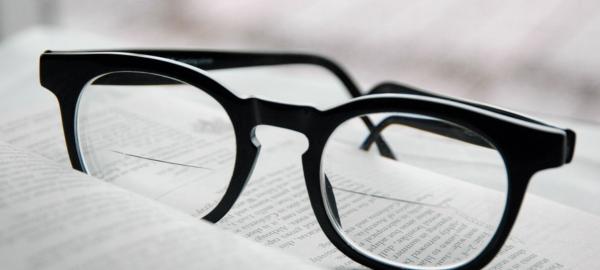What Are Multifocal Lenses?

If you’ve heard people talking about multi-lens glasses and wondered what are multifocal lenses, these insights will answer your question.
As we naturally age, our body goes through many changes, one of which is that our eyes can deteriorate and slowly lose the ability to see clearly. Usually, over the age of 40, eye aging is very common and will lead to eye fatigue and the need for corrective lenses for near tasks.
In most cases, if there is more than one vision issue, such as the need for single-vision lenses and reading glasses or different types of single-vision lenses, it might be best to opt for multifocal lenses for your prescription glasses.
Multifocal lenses have multiple prescriptions built into one lens to correct distances, so you can easily see far, intermediate, and near distances with just one pair of glasses.
Multifocal lenses have no lines between the different prescriptions, so you can easily change between different vision distances with a smooth transition.
For a deeper dive into multifocal lenses, watch our video below for further insights.
Do I need multifocal lenses?
Multifocal lenses are a type of eyeglass lens that can help improve vision for people with presbyopia, a vision condition caused by aging. It is caused by the gradual loss of your eye’s ability to focus on near objects. Without multifocal lenses, many individuals experience difficulty seeing both near and far objects clearly.
Multifocals may be the best option if you are experiencing eye strain when focusing on text or other details at multiple distances. Your eye care professional can perform an eye exam to determine if multifocal lenses will help improve your vision and overall visual clarity and comfort at all distances.
Multifocal lenses vs. bifocals
Consider your lifestyle and personal preferences when deciding which lens is best appropriate for you.


DID YOU KNOW?
Multifocal lenses offer a smooth visul transition from one part of the lens to another, whereas bifocals and trifocals have distinct boundaries when passing from one view to another.
Buying prescription glasses online
Bifocals have separate prescription zones for near and far vision. You’ll have your distance correction at the top, while your near vision correction is at the bottom. This lens has a distinct line (called a bifocal line) between each value which causes an image jump when the eye moves from a far distance to a near one.
Trifocal lenses work the same way as bifocal but have three instead of two distinct sections, so three prescriptions. With a trifocal lens, you’ll be able to point to the three zones for near, intermediate, and distance vision.
These lenses are less recommended than bifocals or multifocals because people might experience image jumps and visual distortions too often while wearing them.
Multifocal lenses
Multifocal glasses help correct all focal points without visible lines, unlike single-vision eyeglasses, bifocals, or trifocals. In a multifocal lens, each area transitions from one visual correction to another, allowing smoother vision. The upper portion of the lens is adapted for distance vision.
It gradually increases into the intermediate prescription in the middle portion, which corrects anything at an arm’s length away (like looking at computer screens). Finally, a multifocal lens increases in power towards the bottom portion of the lens, designed for other “close-up” tasks, like checking a price tag or using your smartphone.
Is it worth getting multifocal lenses?
Multifocal lenses are an update on bifocal and trifocal lenses. With multifocal lenses, you won’t need to have more than one pair of glasses with you. No need to swap between your reading and regular glasses. Plus, the unique design of a multifocal lens allows for no issues of image jumps for different distances.
The only downside is that multifocal lenses cost is higher than single vision lenses or bifocals. Still, given their convenient design and the fact that they correct vision smoothly at multiple distances, most wearers find the price to be worth it.
How to get used to multifocal lenses
If you’re planning on getting your first pair of multifocal lenses, it may take you a few weeks to get used to them. Take into account this learning period and read our tips below. Talk to your eye doctor if you’re still having trouble adapting to your new lenses after one or two weeks.
Tips for getting used to multifocal lenses and enjoying clear vision
Move your head. Moving your head more is one of the first and most essential steps to adapting to your new multifocal lenses. You should use your lenses by moving your head towards an object you want to focus on instead of simply moving your eyes. For example, a good way to do this is to point your nose to what you want to look at.
Looking down through the bottom of the lens is meant for looking at nearby objects, while looking straight ahead is for distance viewing. Looking slightly lower than straight ahead is for intermediate viewing, like a computer screen. Remember that all of your prescriptions are built into the lenses.
Don’t switch between single-vision prescription glasses. Aim only to use your new pair of multifocal glasses, which will help you learn how to use them the correct way quickly.
What are the best multifocal lenses?
There are different lens options for multifocal lenses. The latest generation of multifocal lenses, known as “free-form” lenses, are made with a computer-aided manufacturing process to reduce aberrations.
Each lens is customized precisely to the position of the wearer’s eye, taking into account your pupillary distance and the surface of the lens when looking in different directions. This manufacturing process provides the sharpest, crispest image possible and enhances peripheral vision.
Check out our other articles for more eye health advice, or ask our certified online opticians for any doubts or questions you may have.
Related articles


Related articles







































